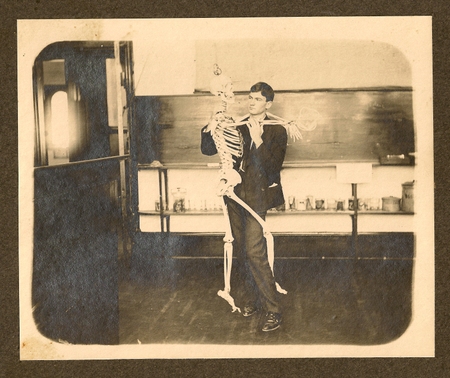“A World of a Different Color,” my review of Ann Norton Greene’s Horses at Work: Harnessing Power in Industrial America, appears in the 30 November 2008 issue of the New York Times Book Review. Jennifer Schuessler, my editor, has also posted to Paper Cuts, the NYTBR blog, about the uncanny parallels between anti-car diatribes today and anti-horse diatribes a century ago, as reported by Greene. Another tidbit from Greene’s book that might be of interest to Streetsblog readers: it was late-nineteenth-century bicycle culture that paved the way, as it were, for the displacement of horse by automobile, “by advocating an increased role for the state and national government in what had been the largely local responsibility for road funding and road building” (p. 259).
Diatribes, of course, need not be fact-based, whether they be anti-car or anti-horse. Were horses really as dangerous as cars? In his recent treatise Traffic, Tom Vanderbilt notes in passing that
in the New York of 1867, horses were killing an average of four pedestrians a week (a bit higher than today’s rate of traffic fatalities, although there were far fewer people and far fewer vehicles). (p. 9)
Fearful if true! While reading Greene’s Horses at Work for my review (as well as a book on the same topic, The Horse in the City: Living Machines in the Nineteenth Century by Clay McShane and Joel A. Tarr), I was on the lookout for evidence to confirm or refute Vanderbilt’s statistics, which he sources to a 1992 book titled Ways of the World: A History of the World’s Roads and the Vehicles That Used Them.
As it happens, McShane and Tarr agree with Vanderbilt that horse-drawn vehicles were dangerous, writing that “Per vehicle, nineteenth-century horse-drawn vehicles caused more accidents than motor vehicles would later, an appalling accident toll, at least in New York City” (p. 54). Not all accidents are fatalities, though, so this isn’t complete vindication.* And it turns out that Greene disagrees with Vanderbilt. She writes:
Few accident statistics predate the earliest twentieth century, and much evidence is anecdotal. . . . The cited dangers of horse-driven traffic must be understood within the context of nineteenth-century traffic control, of which there was none. Cities did not institute systems of traffic police and mechanical signals until the twentieth century. . . . New York City gave right of way at intersections to north- and southbound vehicles, mandated signaling by drivers, forbade stopping and parking except in designated areas, and limited speeds to five miles per hour for business vehicles and eight miles per hour for passenger ones. Speed limits could not be enforced because there was no way to measure speed anyway. Since the streets were congested, speeding was rarely an issue. It is hard to imagine that horse-drawn vehicles traveling two to five miles per hour were dramatically more dangerous than heavy metal cars and trucks traveling ten to forty miles an hour.
So maybe horses are innocent after all. Clearly there is room for further research. If you’d like to see some nineteenth-century horse-drawn vehicles in action, the Library of Congress offers video of traffic in New York’s Herald Square in 1896, near New York’s Dewey Arch in 1899, and on South Spring Street, Los Angeles, in 1897. On the verge of the twentieth century, there’s “What Happened on Twenty-third Street, New York,” in which, against a background of equine transport, a young woman has an adventure with a street grate that prefigures Marilyn Monroe (but with sturdier and more abundant undergarments). There are also two movies of traffic in New York’s Broadway in 1903, a very long film of San Francisco’s Market Street in 1905, and for good measure here’s some footage of the Place de l’Opéra in Paris in 1900. Alas, in none of this documentary footage are the horses wilding. In the absence of any death and dismemberment, I found myself noticing that New York City streets seemed much more expansive then that now. It took a moment for me to figure out why, but then it came to me: there wasn’t any curbside parking. You can pause a horse at the side of the street while you make a delivery, but you can’t leave it in harness unattended for any serious length of time. It’s a living animal. So here’s an easy proposal for returning spaciousness to New York’s streets: restrict parking to stables.
* UPDATE (Dec. 2): In a comment added below, author Clay McShane has written in to say that the accident statistics in his and Joel Tarr’s book are in fact for fatalities, not merely casualties, and that the major issues are kicking and biting.






